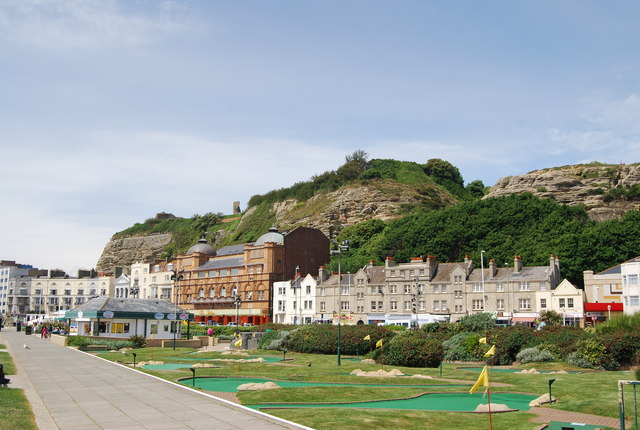Seaside holidays really began in the middle of the 18th century. Before then, the seaside was the place for shipping and fishing.
The first mention of Hastings as a resort was in 1768, when ‘a set of gentlemen who have entered into a subscription to make Hastings a bathing place,’ drew up plans to turn some old stables on the High Street into that centre of the fashionable world, an assembly room. Sadly, plans fell through, and Hastings seemed doomed to stay a little fishing village.
By 1771, things were looking rather more promising. Thomas Hovenden bought the best hotel in town, the Swan, and began improving the rooms. His aim was to attract sea bathers. We can see what he intended from his notices in the Sussex Advertiser from 1772. He said that he was offering, ‘a very neat and commodious ball and assembly room…for the convenience of such as wish to amuse themselves in that way.’
By the second half of the 18th century, inland spas like Tunbridge Wells were losing custom to seaside resorts, helped along with the publication of Dissertation on the use of sea-water in the diseases of the glands. Dr Richard Russell published it, in Latin, in 1750, with an English version following in 1752.
Sea bathing became THE thing to do when King George III and his brothers took to swimming at Southampton, calling it, ‘a salubrious experience.’ As more people came to Hastings to experience just how salubrious bathing was, the town began to expand to accommodate them. It originally sat in a valley with the Bourne stream running through it, between the East and West hills. From about 1815, building started in Priory Valley, west of the castle. A new hotel, he Castle, opened there in 1816. It was a four storey tall brick building, with four bow-fronted bay windows and a covered balcony over the front door. Its location meant that it was, ‘the only hotel with a view of the sea and romantic country,’ – in other words, the rooms at the back were just as good as those at the front.
The Castle did well under the ownership of the Emary family, who advertised in 1846 that their hotel, ‘will be found as replete with comfort as any similar establishment on the Sussex coast, combining the advantages of an hotel with the comfort and retirement of a private residence.’ Sadly, the hotel was demolished in the 1960s, and replaced with a building all too typical of the period.
Behind Castle Hill, the alternative name for West Hill, Wellington Square was built in 1815 – obviously to commemorate Wellington’s overwhelming defeat of Napoleon at the Battle of Waterloo. Completed in 1824, its houses were described as, ‘small, having a very modest front parlour and two drawing rooms, with as many bed chambers.’ The north and west sides were considered superior, being likely to catch more of the sun. They were never intended as permanent residences, rather to be rented by summer sea bathers, then by invalids in winter, to benefit from the bracing elements.
Rather eclipsing Wellington Square, Pelham Crescent and Pelham Place were built between 1824 and 1828. They were named for the then major landowner in Hastings, Sir Thomas Pelham, who was created first Earl of Chichester in 1801. The crescent is still the most important piece of architecture in Hastings, although not as well maintained as it might be. In the centre is the beautiful church of St Mary in the Castle, built between 1825 and 1828. Beneath the church are burial vaults, for the deposition of the defunct well-to-do.
Despite all attempts to make Hastings a really fashionable resort, a threat was rising in the west. During the 1840s it was overtaken as the smart place to be by the new town of St Leonards, developed by James Burton from the late 1820s. Soon smart society was visiting. The Dowager Queen Adelaide, widow of King William IV had a house there, on Grand Parade, in 1837. Princess Victoria and her mother, Princess Victoire of Saxe-Coburg-Saalfeld and Duchess of Kent, wintered at the first house to be built in St Leonards between 1834 and 1835. Where the heir to the throne led, others would follow. But please, not the wrong sort. St Leonarda Arch was built in 1828, to define the boundary of smart St Leonards from less salubrious Hastings.
Image Credits: N Chadwick (geograph.org.uk_-_1969106) .



